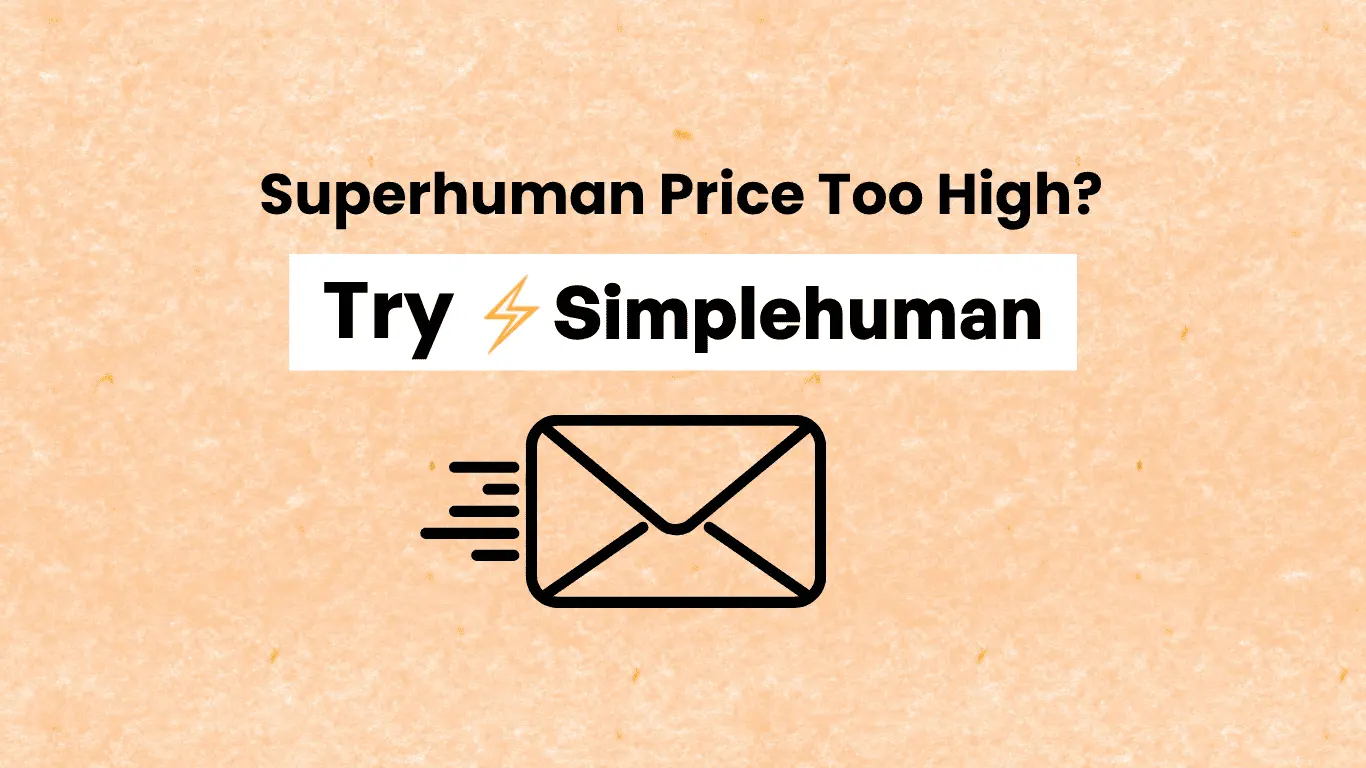Look, I understand. You’ve heard of Superhuman everywhere. It’s the email client that claims to revolutionize your productivity, turn you lightning fast, and pretty much make you some sort of inbox superhero. The catch? That $30 a month price tag that makes your wallet cry every time you even think about it.
If you’re like most professionals, you’ve needed better email tools but couldn’t justify the cost. Here’s good news that could change how you think about email productivity.
The Superhuman Price Problem That Everyone’s Talking About
Here’s what no one wants to be caught saying out loud: it’s really, really pricey for what the majority of people actually use it for. Thirty dollars a month comes out to $360 a year. For email. Just let that marinate for a second.
Yeah, Superhuman does have some great features. The AI aspects are nice but can cost an additional $10/mo, the interface is simple, and it really does feel like a premium experience. But when you kind of boil down what you’re really being charged for versus what you’re really using, the math becomes uncomfortable very quickly.
Most of the Superhuman users I know are literally paying luxury car money for what equates to nicer keyboard shortcuts and a nicer-looking inbox. They’re being charged for enterprise features they’ll never use, AI insights they don’t require, and analytics that inform them about stuff they already know about their own email behavior.
The kicker? Most of Superhuman’s value derives from features you can attain elsewhere for significantly less. We’re referring to the productivity essentials that really accelerate your day, not the flash features that are great in demos but don’t really count in actual work.
Why Smart Professionals Are Looking for Alternatives
The productivity market for email has this strange phenomenon where everyone believes the costlier is better. But what’s really occurring is that professionals are becoming more aware of the fact that premium does not have to equal premium superhuman pricing in order to enjoy premium outcomes.
Small business owners are sick of software subscriptions that are higher than their telephone bills. Salespeople are tired of tools that devour their commission dollars without delivering proportional value. Even corporate workers are beginning to wonder if their companies should be paying thousands of dollars for email clients when less complicated solutions are available.
The change is happening, and it’s happening for the reasons that you might think: people are finally asking the right question, which is what do I really need to get more productive with email?
It isn’t typically AI-driven contact insights or deep email analytics. It’s quicker keyboard shortcuts, improved organization capabilities, and how to get through messages without mousing around menus all day. Simple stuff that shouldn’t cost a luxury price.
Here comes Simplehuman: The Alternative That Finally Makes Sense
This is where Simplehuman enters the fray, and really, it’s a bit of a breath of fresh air. Rather than attempting to do everything for everybody at high prices, Simplehuman is all about doing the important things well at a price point that won’t leave you questioning your life decisions.
Beginning at $7.49 per month, Simplehuman is approximately 75% cheaper than Superhuman and still gives you the essential productivity features that truly count. We’re talking more than 100 customizable gmail shortcuts, a well-integrated command bar, natural language email snoozing, and integration with your current Gmail setup.
The genius aspect? It’s a Gmail Chrome extension that integrates seamlessly with your existing Gmail account. No migration pains, no learning curve from the depths of hell, no interrupting your entire digital process. You continue to use Gmail just the way you’ve always used it, but magically everything starts accelerating and becomes more streamlined.
What You Get Without the Premium Price Tag
Let’s get down to details because this is where the value proposition really comes alive. Simplehuman provides you with the productivity must-haves without the enterprise overhead that hikes the bills.
You receive keyboard shortcuts for just about everything. Email writing, organization, scheduling, you name it. The command bar allows you to spit out commands without digging through menus. The snooze feature supports natural language, so you can ask it to remind you about something “next Tuesday” or “in two weeks” without having to mess with busy date pickers.
But this is the important distinction: it’s all intended to integrate with how you already work with email, not change you to some brand new system. Your current filters don’t move. Your labels function the same. Your workflow isn’t turned on its head.
It’s email enhancement, not email replacement, and that’s all-important to busy professionals who don’t have time to relearn fundamental work.
The True Cost of Email Productivity
Wondering how much does superhuman cost you? When you’re considering email tools, it’s simple to get caught up in lists of features and lose sight of the true cost equation. It is not simply a matter of monthly subscription costs. It is about learning curve, migration time, disruption to workflow, and opportunity cost.
Superhuman looks great on paper, but it involves a lot of investment in studying their system, transferring your data, and changing your workflow to the way they do it. For most working professionals, that underlying expense is actually larger than the superhuman cost.
Simplehuman takes out most of those sneaky expenses by integrating with your current system. You set it up, take perhaps ten minutes to learn the shortcuts, and away you go. No learning curve, no workflow rebuild, no digital life disruption.
Making the Switch That Actually Makes Sense
If you’ve held off on Superhuman because of the cost, Simplehuman provides all that you likely desired from high-end email tools minus the high-end sticker shock. You get the speed, the shortcuts, the smart features, and the productivity boost, all for less than what you probably spend on lunch in a week.
The decision becomes rather self-evident if you take a step back and reflect upon what you’re really wanting to do. You want to be able to process email more quickly, stay better organized, and spend less time getting bogged down on repetitive tasks. You don’t need artificial intelligence to inform you of which emails are most important or metrics to validate what you already understand about your inbox behaviors.
Sometimes the best solution isn’t the most expensive one. Sometimes it’s the one that solves your actual problem without creating new ones or emptying your bank account in the process.








